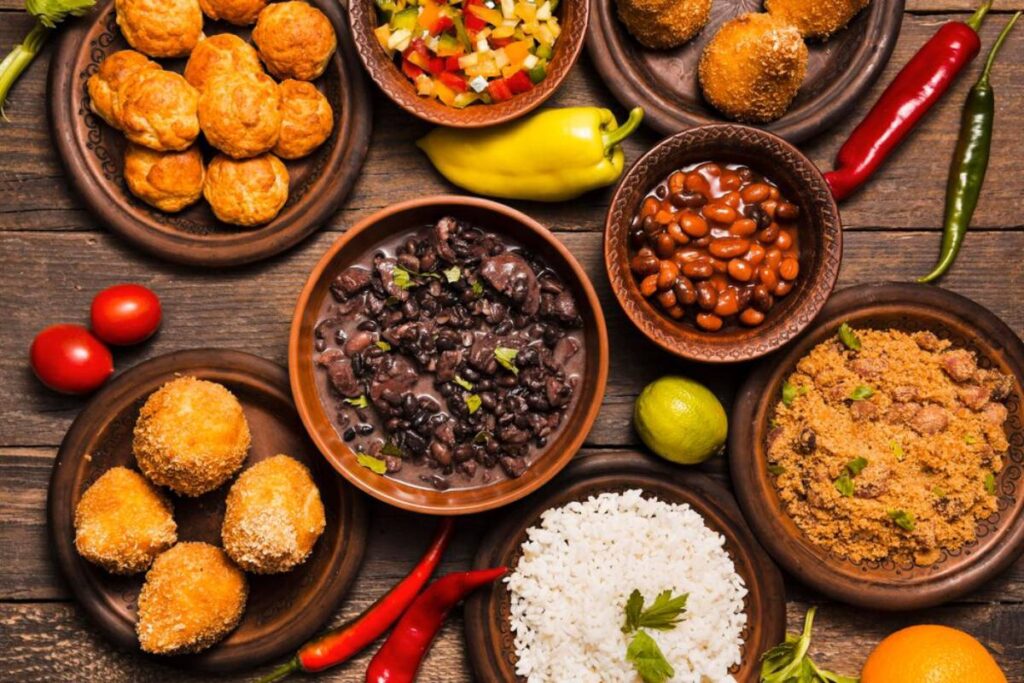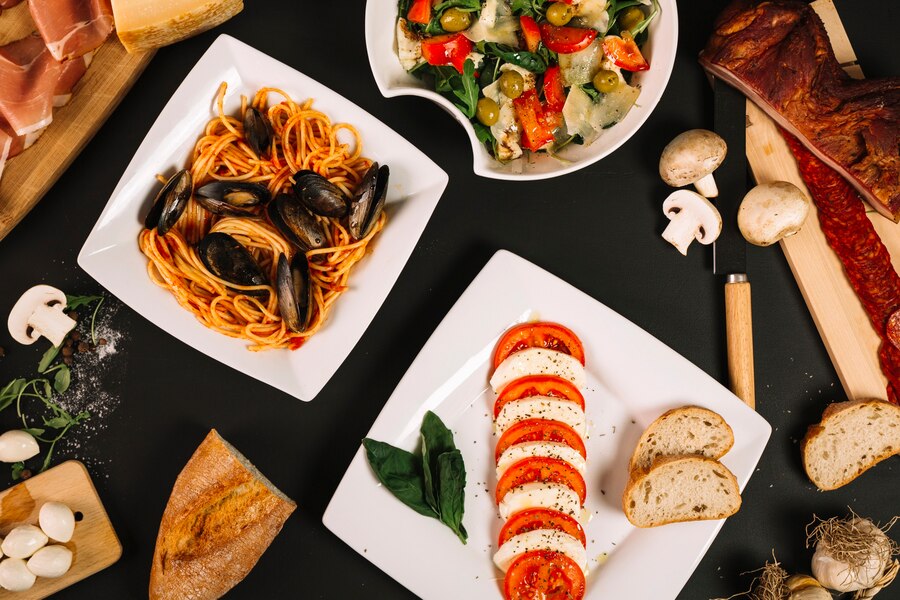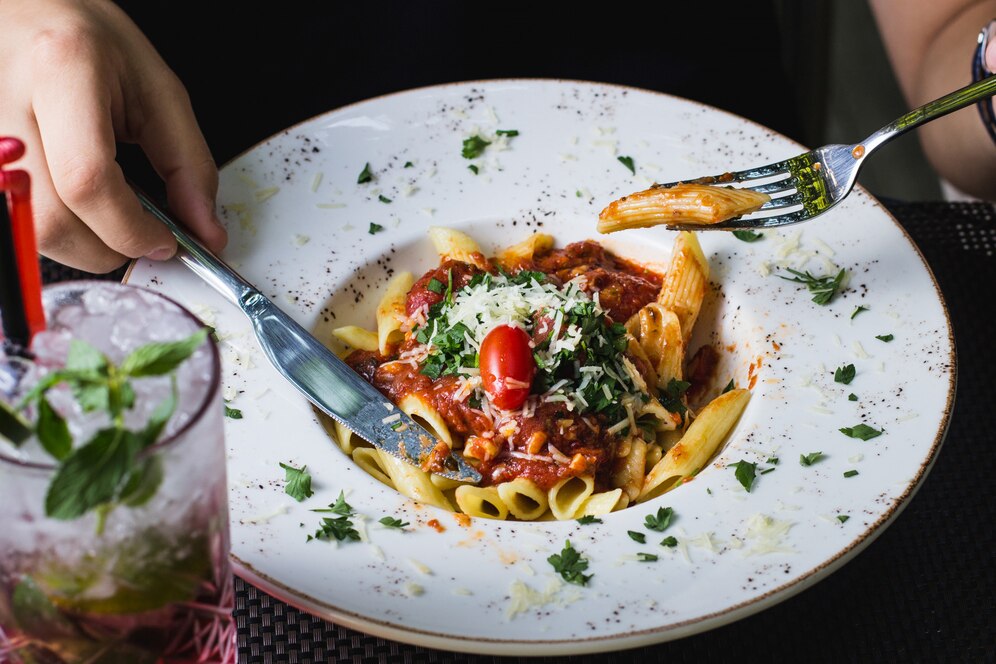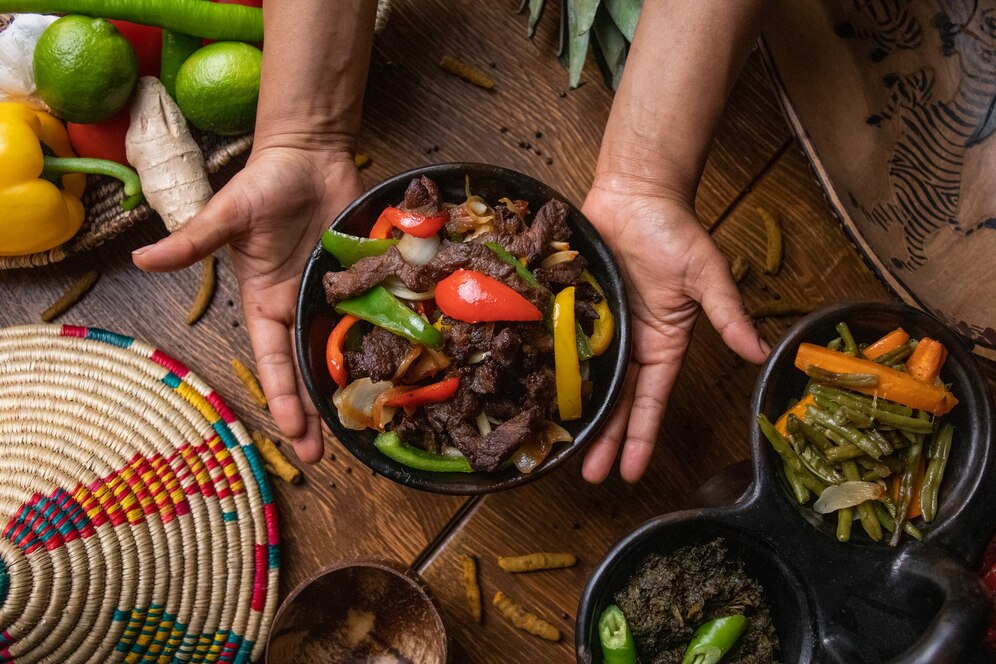The Food Blog

How Different Cuisines Have Shaped Modern Dining
The modern dining experience is a vibrant tapestry of global culinary art. Each dish tells a story; enjoy spicy Thai curry, rustic Italian pasta, or a fusion taco bursting with Korean flavours. With every bite, you savour centuries of food history and cultural influence woven onto your plate.
Globalization and travel have expanded our taste for different cuisines. The lines between traditional and modern food are now blurred. Today, restaurants and home cooks mix techniques, ingredients, and flavors from around the world. This creates hybrid dishes that reflect our connected lives.
This guide shows how different cuisines shape modern dining. You’ll discover the origins of popular culinary trends. Chefs blend flavours from various cultures in fresh and exciting ways.
You’ll also learn how global influences are transforming home cooking and restaurant menus alike.
The Impact of Cultural Influences on Modern Dining

1. The Globalisation of Ingredients
One of the most significant ways global cuisines have shaped modern dining is through the accessibility of diverse ingredients. What was once considered exotic or rare is now widely available in supermarkets and restaurants, allowing home cooks and chefs to experiment with flavours from different cultures.
- Spices and seasonings: Turmeric, za’atar, gochujang, and harissa have become common in modern kitchens, bringing bold flavours from Asia, the Middle East, and Africa into everyday cooking.
- Staple grains and pulses: Ingredients like quinoa from South America, freekeh from the Levant, and black rice from China are now part of modern culinary repertoires.
- Sauces and condiments: Sriracha, chimichurri, and tahini have become mainstays in fusion cuisine, adding global flair to burgers, tacos, and salads.
2. Fusion Cuisine: Blending Flavours Across Borders
Fusion cuisine is one of the most visible examples of how global cuisines have influenced modern dining. By combining techniques, ingredients, and different cultures’ cooking styles, chefs create unique and innovative dishes.
Examples of Fusion Dishes:
- Korean Tacos: Combining Korean barbecue flavours (bulgogi, kimchi) with Mexican-style tortillas and toppings.
- Ramen Burgers: A Japanese-American fusion where crispy ramen noodles replace the traditional burger bun.
- Sushi Burritos: A hybrid of Japanese sushi rolls and Mexican burritos filled with rice, raw fish, and vegetables.
- Indian-Italian Fusion: Dishes like butter chicken pizza or masala pasta blend the rich spices of India with Italian classics.
How Specific Cuisines Have Shaped Modern Dining

1. Italian Cuisine: Simplicity and Freshness
Italian cuisine’s influence on modern dining is undeniable, from pasta and pizza to techniques prioritising simplicity and quality ingredients.
Key Contributions:
- Farm-to-table philosophy: Italian cooking celebrates seasonal, locally sourced ingredients, inspiring the slow food movement in modern dining.
- Classic techniques: Techniques such as fresh pasta-making, wood-fired pizza baking, and risotto preparation have become standard in contemporary kitchens.
- Influence on fast-casual dining: The popularity of pasta bars, pizzerias, and antipasti platters has transformed fast-casual dining worldwide.
Modern Influence:
Many high-end restaurants now feature house-made pasta and freshly baked focaccia, while fast-casual eateries offer customisable pasta bowls and wood-fired pizzas inspired by traditional Italian trattorias.
2. French Cuisine: Culinary Techniques and Fine Dining
French cuisine is renowned for its precision and sophistication, significantly influencing fine dining and culinary education.
Key Contributions:
- Cooking techniques: Modern chefs continue to use classic French techniques such as sautéing, poaching, and flambéing.
- Sauces and stocks: French “mother sauces” (béchamel, velouté, espagnole, hollandaise, and tomato) serve as the foundation of many modern dishes.
- Plating and presentation: The emphasis on artistic plating and elegant presentation stems from French haute cuisine.
Modern Influence:
Even casual bistros and brasseries embrace French-style cooking techniques, while fine-dining establishments often adopt classic French wine pairings and multi-course menus.
3. Asian Cuisine: Bold Flavours and Health-Focused Cooking
Asian cuisines, including Chinese, Japanese, Thai, and Korean, have introduced bold flavours, unique ingredients, and healthy cooking methods to modern dining.
Key Contributions:
- Umami-rich ingredients: Soy sauce, miso, ginger, and fish sauce add depth and complexity to modern dishes.
- Cooking methods: Techniques like stir-frying, steaming, and pickling have influenced global culinary practices.
- Street food culture: Asian street food dishes such as bao buns, banh mi, and dumplings have become mainstream in modern dining.
Modern Influence:
The popularity of ramen shops, poke bars, and Asian-fusion gastropubs demonstrates the widespread appeal of Asian cuisine in contemporary dining.
4. Middle Eastern Cuisine: Spice Blends and Plant-Based Trends
Middle Eastern cuisine’s vibrant spices and plant-based dishes have had a major impact on modern dining, especially with the rise of vegan and vegetarian trends.
Key Contributions:
- Spice blends: Za’atar, sumac, and baharat have introduced complex spice profiles into modern cooking.
- Plant-based staples: Dishes such as hummus, falafel, tabbouleh, and baba ganoush are now mainstream vegetarian options.
- Shared plates: The mezze style of dining (small, shareable dishes) has influenced modern restaurant menus.
Modern Influence:
Plant-based restaurants and vegan kitchens often feature Middle Eastern spices and ingredients to add depth to meat-free dishes.
5. Latin American Cuisine: Vibrant Flavours and Street Food Influence
From Mexican tacos to Peruvian ceviche, Latin American cuisines have brought bold, zesty flavours to modern dining.
Key Contributions:
- Street food culture: Tacos, arepas, and empanadas have become staples in food trucks and casual dining spots worldwide.
- Chillies and spices: Smoky chipotle, tangy lime, and fresh cilantro have influenced modern flavour profiles.
- Grilled meats and marinades: Techniques such as asado (barbecue) have inspired modern grilling trends.
Modern Influence:
Many upscale restaurants now feature Latin-inspired tasting menus, while street food markets offer authentic tacos, tamales, and ceviche.
How Modern Dining Trends Reflect Global Cuisines
1. Plant-Based and Vegan Trends
Middle Eastern, Asian, and Mediterranean foods are shaping plant-based dining. Dishes like falafel, vegetable dumplings, and jackfruit tacos are now popular vegan choices.
2. Sustainable and Ethical Dining
The farm-to-table movement takes cues from Italian and French cooking. It focuses on using local ingredients and supports sustainability in today’s restaurants.
3. Global Street Food in Fine Dining
Street food flavours from Mexico, Thailand, and India are now featured in gourmet fine-dining settings, often with elevated ingredients and presentation.
Modern Dining

Global influences abound in modern dining, with chefs and home cooks riffing off of other cuisines. The blending of techniques, ingredients and traditions provides the perfect basis for inventive plates that embrace cultural diversity.
Global cuisine rules, whether you’re enjoying fusion street food or fine dining with French techniques. In your kitchen, explore international ingredients and recipes. This isn’t just a stroll down memory lane. You’ll dive into a rich history and see the creativity of modern global dining.









